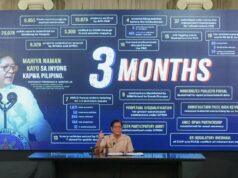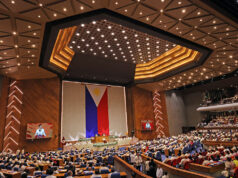Gov’t told to prioritize Kinder to Grade 3 classroom backlogs

THE PHILIPPINE GOVERNMENT must prioritize the backlogs in Kindergarten to Grade 3 classrooms, according to the Second Congressional Commission on Education (EDCOM 2).
EDCOM 2 Executive Director Karol Mark R. Yee said the shift of early education students to modular learning could pose adverse consequences to literacy, amid the backlog of classrooms.
“If we have to prioritize, I hope we prioritize kindergarten to Grade 3 (classrooms). Because children, non-independent learners, cannot study at home,” Mr. Yee told a Senate education panel on Tuesday.
Mr. Yee also noted that some parents cannot fully support early education learners during modular learning.
“Data shows about 40% of parents are not home or they need to migrate, so no one can teach (the students) because we know the realities that not all parents are able to do that for their children,” he added.
Mr. Yee had called on the Department of Education (DepEd) to map out the condemnation lifetime of existing buildings and create multiple designs for school buildings that could address climate change.
He added that there is a need to diversify solutions to bridge the classroom gap by exploring collaborations with local government units (LGU), non-government organizations and public and private partnerships for construction.
The DepEd had earlier said that it would take 55 years to bridge the backlog of about 165,000 classrooms if the present pace of construction continues.
He said that there is also a need to expand the government’s voucher program by tapping private schools to take on excess students from public schools.
“Private schools can accommodate up to 23% of the overflow of students in public schools. It is a short-term but immediate relief that can be explored,” Mr. Yee said.
During the hearing, Senator Paolo Benigno “Bam” Aquino IV also questioned disparity of classroom construction costs.
According to the DepEd and the Department of Public Works and Highways (DPWH), it would cost them about P2.5 million to P3.8 million in constructing classrooms. While partnerships between LGUs and the private sector costs about P1.5 million to P2 million.
“We want to know. Where is the difference really? During the technical working group (TWG), we will require the different groups to submit all the way to cost of materials, cost of labor. We will know so we can compare. Maybe your cement is half the price of their cement,” Mr. Aquino said.
“Hopefully we can move forward and really provide the best value for our students. If we can do this at P1.5 million to P2 million, it would be like doubling the classroom capacity we can build. I think this is something we can all get behind,” he added.
The Senator also said that LGUs and private sector partnerships can complete classrooms in less than a year, while government agencies take longer completing similar projects. — Adrian H. Halili



